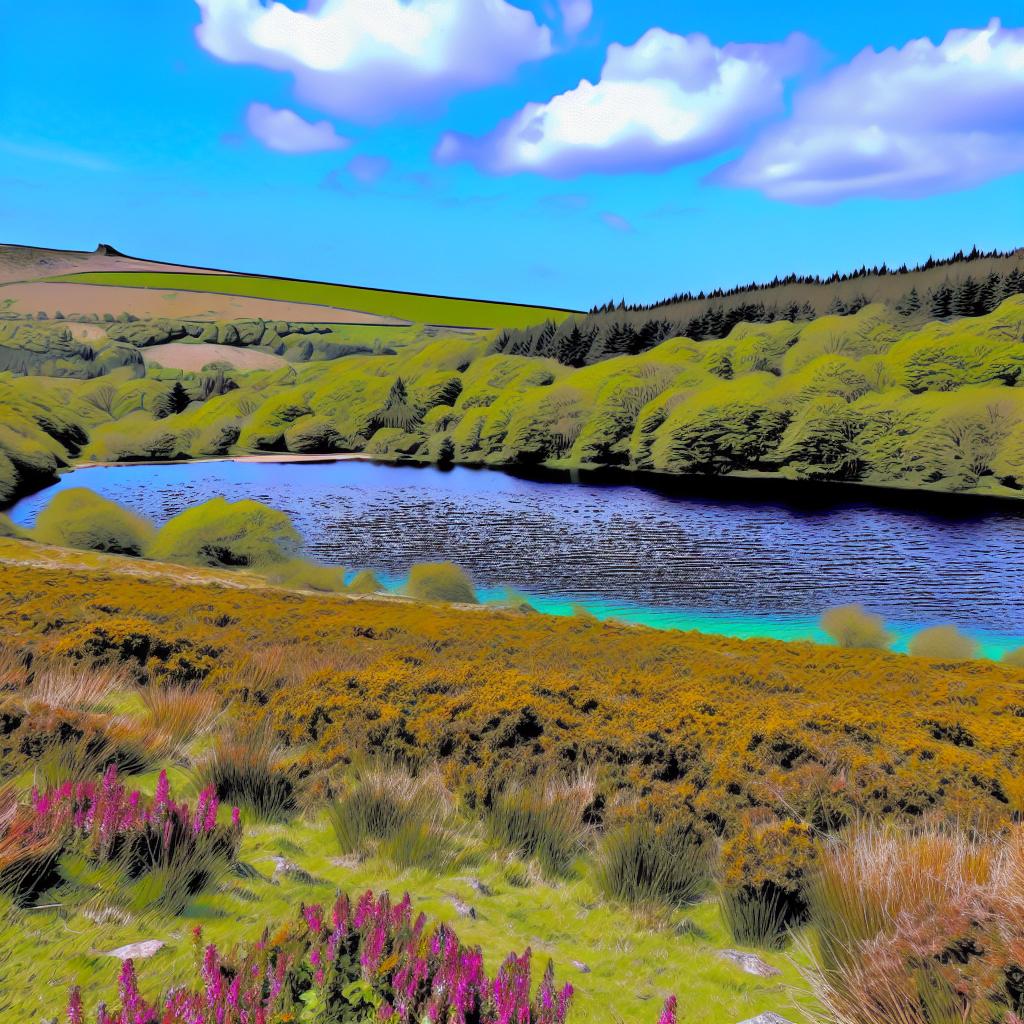The Lakes of Dartmoor and Exmoor
Dartmoor and Exmoor, located in the southwest of England, are famed for their breathtaking landscapes and rich, unique ecosystems. While these two moors are best known for their rugged tors, rolling hills, and extensive moorland, they also contain a variety of lakes and reservoirs. These water bodies serve as ecological havens as well as vital sources of water for surrounding communities. Understanding the significance of these lakes requires an exploration of both the natural and human-induced elements that contribute to their current state.
Dartmoor Lakes
Dartmoor’s landscape is enriched by a number of reservoirs and few natural lakes, each contributing uniquely to the region’s ecological balance and water supply capabilities. Dartmoor’s lakes, though fewer in number when compared to other features of the region, offer significant environmental and cultural value.
Fernworthy Reservoir
Nestled to the north of Chagford, the Fernworthy Reservoir is an attractive spot not only for locals but also for tourists seeking a peaceful retreat. This reservoir is encircled by woodlands teeming with diverse wildlife, which renders it an essential element of the surrounding habitat. Its function extends beyond just providing water; it is a cherished locale for walkers and nature enthusiasts who frequent it to enjoy the tranquility and observe the interplay of nature. Those interested in delving deeper into Fernworthy’s history and significance can find extensive information on the Dartmoor National Park website.
Venford Reservoir
Positioned near Holne in Dartmoor’s southern reach, Venford Reservoir offers some of the most picturesque views in the area. A well-beaten footpath encircles the reservoir, tempting walkers and sightseers alike to explore its boundaries. The reservoir primarily functions as a water supply, which underscores its importance to nearby communities. However, it also lures visitors who seek to immerse themselves in Dartmoor’s serene and lush landscape, making it a multifaceted jewel in Dartmoor’s natural crown.
Exmoor Lakes
Exmoor may not be as dominated by lakes as Dartmoor, yet it still presents several noteworthy water bodies that enhance the region’s natural beauty and ecological diversity. Each lake in Exmoor holds its own against the dramatic backdrop of rolling hills and sweeping moors.
Wimbleball Lake
Boasting the title of one of Exmoor’s largest water bodies, Wimbleball Lake is a man-made reservoir that offers a wealth of recreational pursuits. From sailing to fishing, there is no shortage of activities that can recharge the spirit. Beyond leisure, Wimbleball Lake is a hotspot for wildlife observation, making it invaluable for those keen on exploring local biodiversity. This reservoir is a confluence of leisure activities and natural wonder, forming a balanced ecosystem that supports various species. Additional details about the myriad of activities available at Wimbleball Lake can be found through the South West Lakes Trust site, which serves as an excellent guide for planning a visit.
Porlock Weir
Porlock Weir stands out as a coastal lagoon rather than a traditional inland lake. This lagoon is formed by the combined dynamics of tidal forces and the flow of the River Horner. Its unique geography supports an essential habitat for both bird life and coastal plant species, rendering it a vibrant and critical component of the broader Exmoor National Park ecosystem. Porlock Weir’s existence underscores the interconnection between freshwater and coastal ecosystems, highlighting the importance of such features in maintaining biodiversity.
Conclusion
The lakes of Dartmoor and Exmoor, while not as numerous or as towering as the tors and hills, hold a pivotal role in the ecology and leisure offerings of these regions. They form critical habitats for diverse wildlife species, provide vital water supplies to nearby communities, and serve as treasured venues for a numerous recreational activities. For individuals keen on further exploring these areas and the myriad of natural features they house, comprehensive resources, such as the Exmoor National Park website, offer valuable insights and guidance.
Throughout Dartmoor and Exmoor, the lakes stand as testaments to the rich, varied ecosystems that thrive in these moorland regions. They remind visitors and locals alike of the delicate balance between human needs and environmental preservation. By protecting and cherishing these water bodies, Dartmoor and Exmoor continue to offer not only bountiful resources but also the tranquility and beauty that have drawn admirers for centuries. As custodians of these environments, the community and visitors alike bear the responsibility of ensuring that such natural treasures are preserved for generations to come.
